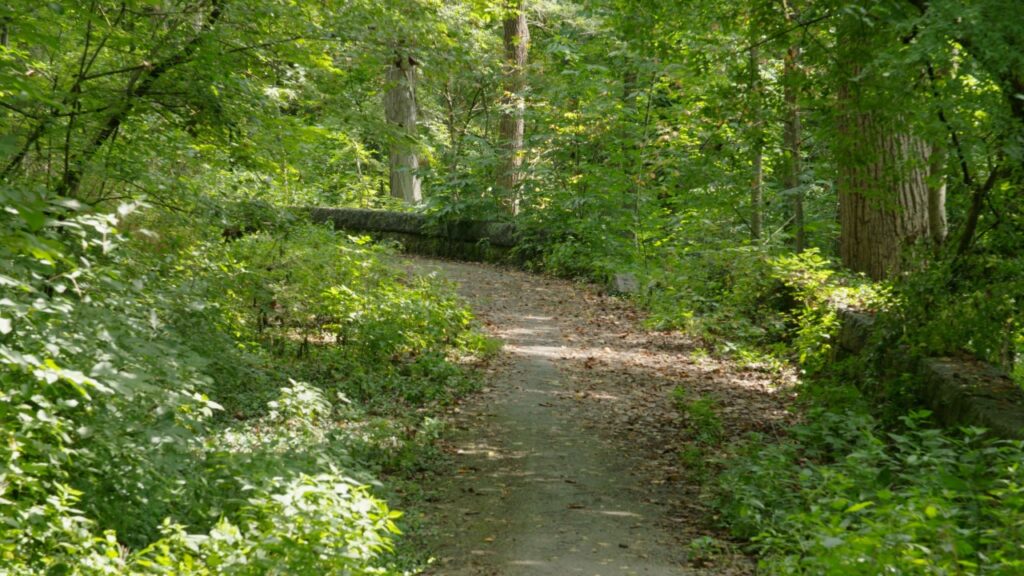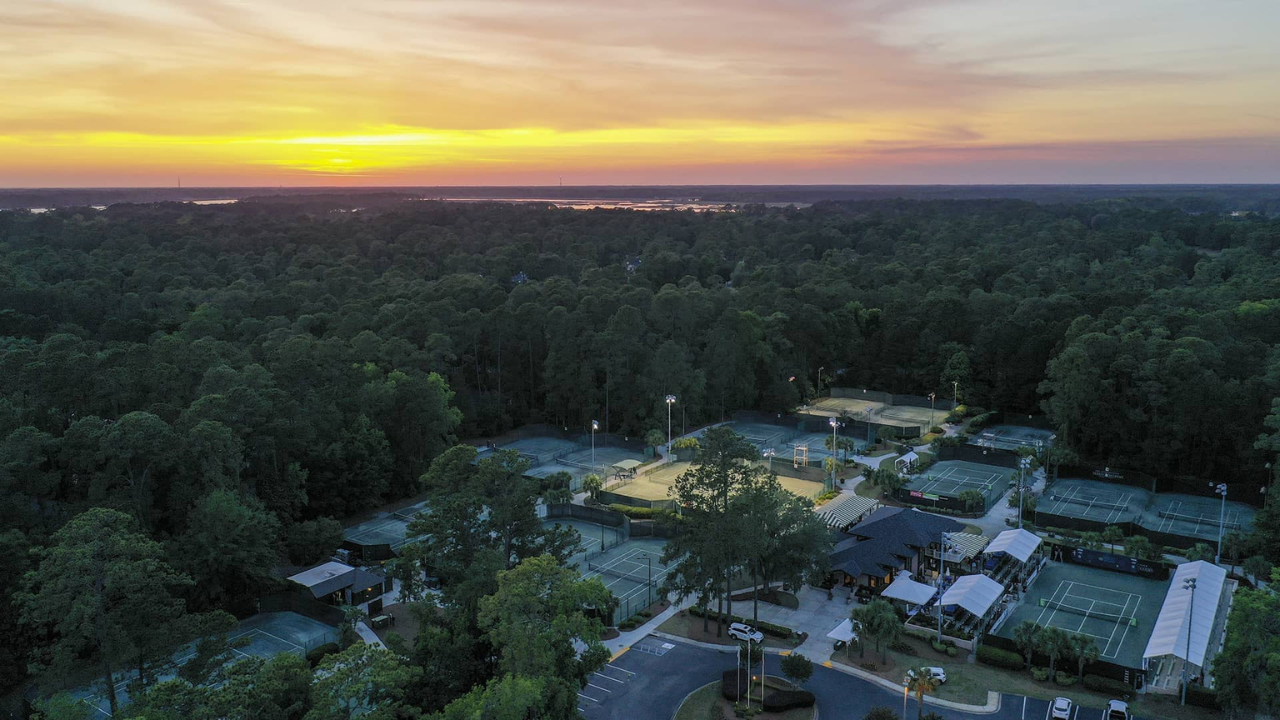Introduction
Nestled in the heart of the city, Forest Park stands as a verdant oasis, a testament to the enduring love and dedication of generations who have worked tirelessly to preserve its natural beauty. Spanning over 5,000 acres, Forest Park is not just a park; it is a living, breathing entity that has witnessed the passage of time, the evolution of the community, and the unwavering commitment to conservation. This article delves into the rich history, ecological significance, and the generational efforts that have shaped Forest Park into the beloved sanctuary it is today.
The Historical Roots of Forest Park
1.1. The Birth of a Green Vision
The story of Forest Park begins in the late 19th century, a time when urban areas were rapidly expanding, and the need for green spaces became increasingly apparent.
- Visionaries and Planners: The creation of Forest Park was spearheaded by visionary city planners and civic leaders who recognized the importance of preserving natural spaces for public enjoyment and environmental health.
- Land Acquisition: The park’s land was acquired through a combination of purchases and donations, with the goal of creating a vast, interconnected green space that would serve as a refuge from the bustling city life.
1.2. Early Development and Design
The initial development of Forest Park was guided by principles of landscape architecture that emphasized natural beauty and accessibility.
- Landscape Architects: Renowned landscape architects were brought in to design the park, incorporating elements such as winding trails, scenic vistas, and diverse plantings.
- Public Amenities: Early amenities included picnic areas, boating facilities, and recreational spaces, making the park a popular destination for families and outdoor enthusiasts.
The Ecological Significance of Forest Park
2.1. Biodiversity Hotspot
Forest Park is home to a remarkable diversity of flora and fauna, making it a critical area for biodiversity conservation.
- Native Species: The park supports a wide range of native plant species, from towering Douglas firs to delicate wildflowers. These plants provide habitat and food for numerous animal species.
- Wildlife Habitat: Forest Park is a haven for wildlife, including deer, coyotes, and a variety of bird species. The park’s diverse habitats, from forests to wetlands, support a rich array of life.
2.2. Ecosystem Services
The ecological benefits of Forest Park extend beyond its boundaries, providing essential services to the surrounding urban area.
- Air and Water Quality: The park’s trees and vegetation play a crucial role in improving air quality by filtering pollutants and producing oxygen. Wetlands within the park help filter and purify water.
- Climate Regulation: Forest Park acts as a natural air conditioner, mitigating the urban heat island effect and providing a cooler, more pleasant environment for visitors.
Generational Efforts in Conservation
3.1. Early Conservation Initiatives
From its inception, Forest Park has been the focus of conservation efforts aimed at preserving its natural beauty and ecological integrity.
- Tree Planting Campaigns: Early conservation initiatives included large-scale tree planting campaigns to restore and enhance the park’s forested areas.
- Habitat Restoration: Efforts were made to restore degraded habitats, such as wetlands and meadows, to their natural state.
3.2. Community Involvement
The love for Forest Park has been passed down through generations, with community members playing a vital role in its preservation.
- Volunteer Programs: Over the years, numerous volunteer programs have been established, engaging citizens in activities such as tree planting, invasive species removal, and trail maintenance.
- Educational Outreach: Educational programs and workshops have been instrumental in raising awareness about the importance of conservation and fostering a sense of stewardship among park visitors.
3.3. Modern Conservation Challenges
Despite the successes, Forest Park faces ongoing challenges that require continued vigilance and innovation.
- Invasive Species: Invasive plants and animals pose a significant threat to the park’s native ecosystems, requiring ongoing management and control efforts.
- Climate Change: The impacts of climate change, such as increased temperatures and altered precipitation patterns, present new challenges for the park’s ecosystems.
The Role of Forest Park in the Community
4.1. A Place for Recreation and Relaxation
Forest Park has always been a place for people to connect with nature and enjoy outdoor activities.
- Recreational Opportunities: The park offers a wide range of recreational opportunities, from hiking and biking to birdwatching and picnicking. Its extensive trail network provides access to some of the most scenic areas.
- Mental and Physical Health: The park’s natural beauty and tranquility provide a respite from the stresses of urban life, promoting mental and physical well-being.
4.2. Cultural and Educational Hub
Forest Park is also a cultural and educational hub, hosting events and programs that enrich the community.
- Cultural Events: The park hosts a variety of cultural events, including concerts, art exhibitions, and festivals, that celebrate the community’s diversity and creativity.
- Educational Programs: Educational programs, such as guided nature walks and workshops, provide opportunities for learning and engagement with the natural world.

The Future of Forest Park
5.1. Vision for the Future
The future of Forest Park is guided by a vision that balances conservation with community needs.
- Sustainable Management: Efforts are underway to implement sustainable management practices that ensure the park’s ecological health while accommodating recreational use.
- Climate Resilience: Strategies are being developed to enhance the park’s resilience to climate change, including the restoration of natural habitats and the introduction of climate-adapted species.
5.2. Community Engagement
Community involvement will remain a cornerstone of Forest Park’s future.
- Volunteerism: Expanding volunteer programs and opportunities for community involvement will be essential for the park’s ongoing conservation efforts.
- Partnerships: Building partnerships with local organizations, schools, and businesses will help to amplify the park’s impact and reach.
5.3. Legacy of Love
The legacy of love for Forest Park is one that will continue to inspire future generations.
- Intergenerational Stewardship: Encouraging intergenerational stewardship, where knowledge and passion for the park are passed down, will ensure its preservation for years to come.
- Celebrating Successes: Celebrating the successes and milestones achieved in the park’s conservation will foster a sense of pride and ownership among the community.
Conclusion
Forest Park is more than just a park; it is a living legacy of love, dedication, and conservation. From its historical roots to its ecological significance, the park stands as a testament to the power of community and the enduring commitment to preserving natural beauty. As we look to the future, the challenges and opportunities that lie ahead remind us of the importance of continued vigilance and innovation. By working together, we can ensure that Forest Park remains a cherished sanctuary for generations to come, a place where nature and community thrive in harmony.
-
Tips for Navigating the Park During the Great Forest Park Balloon Race

The Great Forest Park Balloon Race, held annually in St. Louis, Missouri, transforms the sprawling 1,300-acre Forest Park into a vibrant hub of activity, drawing over 100,000 spectators to witness a sky filled with colorful hot air balloons. Scheduled for September 20-21, 2025, this free, family-friendly event—featuring the Balloon Glow on Friday and the Race…
-
National Tennis Tournament’s Return to Forest Park Recalls Dwight Davis Legacy

In September 2023, the National Public Parks Tennis Championships returned to St. Louis, Missouri, marking a century since its inception in 1923. Hosted at the Dwight Davis Tennis Center in Forest Park, this milestone event not only celebrated a sporting legacy but also rekindled the memory of Dwight F. Davis—a St. Louis native whose vision…
-
Be the Heart of the Park: Support Forest Park Today

Forest Park stands as a living testament to the power of nature—a sprawling sanctuary where towering trees, delicate wildflowers, and winding trails invite us to pause, breathe, and connect. For generations, this cherished woodland has been more than just a green space; it’s a vital ecosystem, a classroom for discovery, and a source of solace.…




